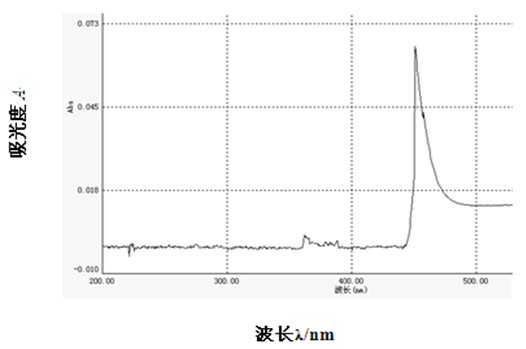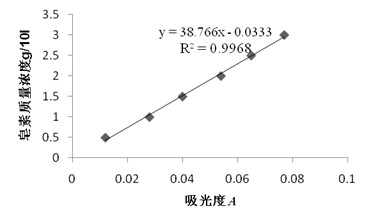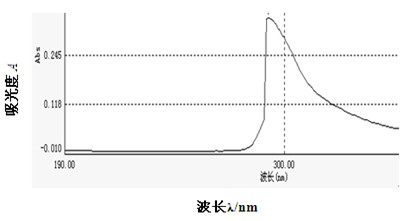Quantitative detection method for saponin in tea saponin
A quantitative detection method and technology for tea saponin, applied in the field of detection, can solve the problems of high viscosity, low content and dark black color of tea saponin, and achieve the effects of high repeatability and accuracy, simple equipment and easy operation.
- Summary
- Abstract
- Description
- Claims
- Application Information
AI Technical Summary
Problems solved by technology
Method used
Image
Examples
Embodiment 1
[0039] Embodiment 1: Gravimetric method, vanillin-concentrated sulfuric acid method and HPLC quantitative detection of camellia oleifera seed meal saponins
[0040] (1) Quantitative detection by gravimetric method
[0041]Prepare the following reagents: (1) Methanol (analytical grade), hydrochloric acid (ρ=1.18 g / mL), sodium hydroxide (analytical grade), acetone (analytical grade), 20% hydrochloric acid solution (measure 504 mL of hydrochloric acid, add water Dilute to 1000 mL), sodium hydroxide methanol solution (weigh 10 g of sodium hydroxide, dissolve in 20 mL of water, add 80 mL of methanol) and mix well. Weigh 3.0~3.5g (accurate to 0.0001g) of powdered Camellia oleifera seed meal sample, put it in an Erlenmeyer flask, add 25 mL of sodium hydroxide methanol solution, connect it with a serpentine condenser, and place it in a fume hood for reflux in a boiling water bath for 2 h , take out and cool to room temperature. Adjust the above solution to pH 7 with 20% hydrochl...
Embodiment 2
[0055] Example 2: Quantitative detection of high-purity tea saponin and tea saponin crude extract by gravimetric method, vanillin-concentrated sulfuric acid method and HPLC method
[0056] (1) Quantitative detection by gravimetric method
[0057] Prepare the following reagents: (1) Methanol (analytical grade), hydrochloric acid (ρ=1.18 g / mL), sodium hydroxide (analytical grade), acetone (analytical grade), 20% hydrochloric acid solution (measure 504 mL of hydrochloric acid, add water Dilute to 1000 mL), sodium hydroxide methanol solution (weigh 10 g of sodium hydroxide, dissolve in 20 mL of water, add 80 mL of methanol) and mix well. Weigh 3.0-3.5 g of high-purity tea saponin and tea saponin crude extract sample, put it in an Erlenmeyer flask, add 25 mL of sodium hydroxide methanol solution, connect a serpentine condenser, and place it in a fume hood for reflux in a boiling water bath 2 h, removed and cooled to room temperature. The above solution was adjusted to pH 7 wi...
PUM
 Login to View More
Login to View More Abstract
Description
Claims
Application Information
 Login to View More
Login to View More - R&D
- Intellectual Property
- Life Sciences
- Materials
- Tech Scout
- Unparalleled Data Quality
- Higher Quality Content
- 60% Fewer Hallucinations
Browse by: Latest US Patents, China's latest patents, Technical Efficacy Thesaurus, Application Domain, Technology Topic, Popular Technical Reports.
© 2025 PatSnap. All rights reserved.Legal|Privacy policy|Modern Slavery Act Transparency Statement|Sitemap|About US| Contact US: help@patsnap.com



